Version 0.5 Dev Preview #8: Recruits & Visages
In today's stream, I talked about some expected changes to the Recruit system, covering preset and quickstart characters, and Visages!
Blind Exploration
At the start of the stream, I briefly talked about an experimental rule for exploration called Blind Exploration, where instead of using premade maps, players could roll on a table to determine what tiles are revealed, based on their visibility level. This concept is largely inspired by Etrian Odyssey's dungeon-crawling aspects with a focus on exploration and drawing a map of your surroundings, along with some older editions of D&D that had players draw their own maps.
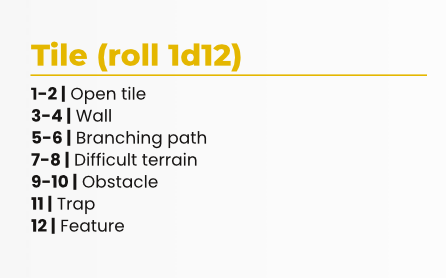
The idea is that you reveal a number of tiles in front of you (by default 6 tiles), and for each tile you can see, you would roll a d12 die to see what type of map feature is revealed. After rolling these results, the exploring player, with help from the GM, would distribute the rolled results where it would make most sense on the emergent map. These can be adjoining walls, interactable obstacles, or Features, which are further randomised based on the biome/habitat - caves may have unstable stalactites, propelling geysers and tunnel shortcuts.
This is still a majorly experimental subsystem and one I'm not too sold on (largely because of the amount of time it might take to roll and interpret all the results), but just one I wanted to cover since it sounds cool if done well.
Recruits
I also discussed about how to go about Recruits and preset characters. Regarding character creation, I found there were two major extremes, and was wondering where on that spectrum I wanted to design around:
One one extreme is Full Character Creation. This is allowing the player to fully build and customise a character from scratch. This is the expected default for the main player character and offered the most player freedom, but for Recruits (which operate more like hirelings or side characters), this was not a viable choice.
On the other are Full Preset Characters. This is what you would expect to see in a typical TRPG's quickstart module (a condensed version of the rules for new players, which typically has premade character sheets, abilities and names). This was the system I was planning to go with initially, since preset characters kind of captures the gacha/hero recruiting idea I wanted for Voyager, where you're collecting and building attachments to existing characters. However, it doesn't allow for much player involvement, who may want the freedom of naming and playing their own character.
So far, we arrived at a hybrid system:
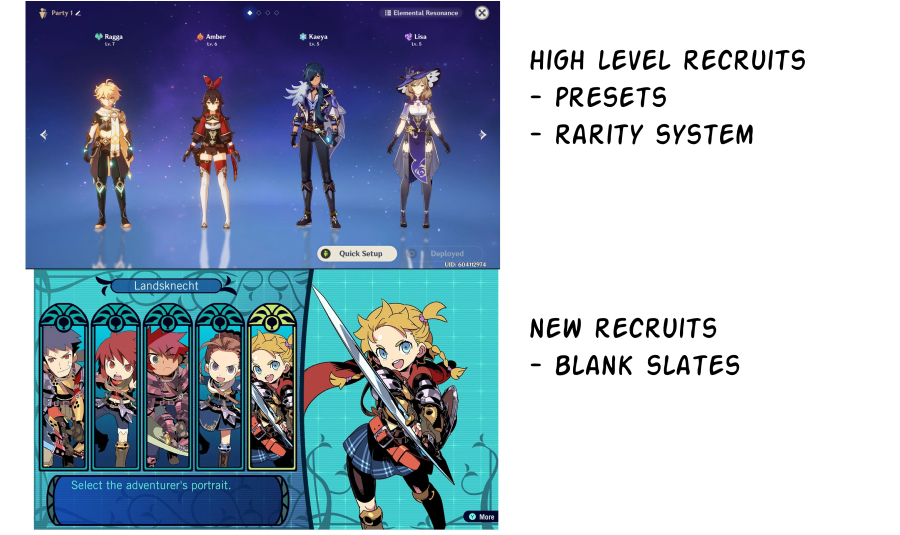
The first Recruit subsystem is inspired again by Etrian Odyssey. In the game, each class has a selection of preset portraits, but you were free to name them whatever you liked. They were essentially blank slates where you could ascribe your own backstory or personality to these portraits. So here, I was thinking that each Venture, instead of having predetermined named characters, the player is free to choose from a selection of diverse character portraits tied to a Venture (with a set of preset abilities and starting equipment), and they are free to play them however they like beyond that.
The second subsystem is closer to what you expect in a typical gacha/hero recruiter system - named characters with detailed notes on their backstory and personality that you can temporarily hire to join your party. Compared to the above where you are making beginner Voyagers, these would be established characters in the world that the Liaison (GM) can sprinkle around and have the players interact with.
Having both systems may work quite well since the blank slates is a good middle-ground between full character creation and full presets - just enough blank space for new players to imprint their own investment into a premade sheet, while keeping all the mechanical details squared away so they can get into playing straight away without needing to know all the character creation rules.
The second system works because it gives more solid characters to work with - moreso for the benefit of the GM than the players. Them being established characters also gives a sense of future progression to new players. If we really wanted to lean into the gacha elements, these characters might even be ranked according to star/rarity level - introducing someone as a 5-star immediately clues in the players of their power and fame.
This also allows for recruiting antagonist characters/playable bosses! I definitely want to leave the GM tools where, after the party defeats an antagonist, they have a change of heart or allegiance and become available for recruitment later.
Visages
We also covered some changes to how Visages work. Initially, they worked more like Boons in Hades where your party asks for a blessing, and that blessing only applies to that Voyage and disappears after the session or adventure concludes. Now though, I'm leaning more towards Visages being tied to your individual character and being permanent.
The idea of Visages in lore are that they are manifestations of humankind's stories, so they can represent any figure from mythology, fiction or history blessing your character. Mechanically, this would manifest as a "superpower" or unique ability your Voyager has, much like a Semblance in RWBY or Mythos in City of Mist.
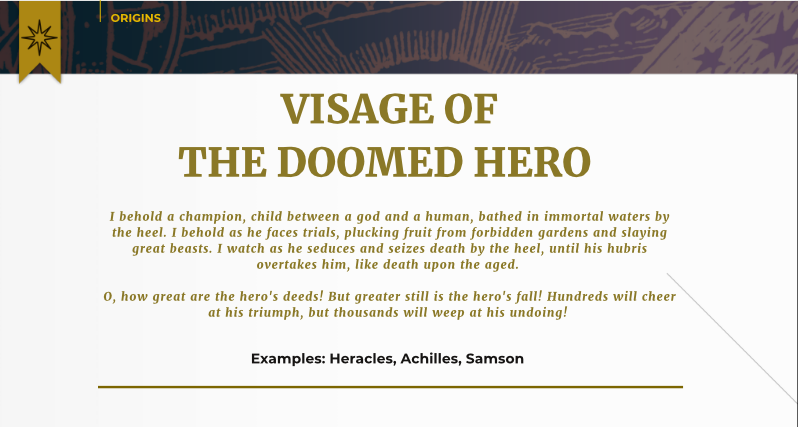
This ability can be as simple as a blessing from the goddess of the hearth Hestia giving you additional maximum HP, or as complex as a curse that you have to roleplay into, such as an aversion to sunlight if you have the Visage of Dracula.
Visages are grouped into nameless archetypes to best facilitate this - players are free to flavour their character's unique Visage however they like, and would then choose from one of the preset abilities that best matches their idea of that Visage, or create their own with help from the GM. Also, in-universe, your Voyager may or may not actually know the identity of the Visage blessing them, as it could have been lost to time, only to reveal itself further along into that character's journey.
This means that with such general archetypes, you can not only flavour your Visage as a character from mythology, but also as your favourite fictional character or even a meme. A Visage archetype centred around music and the arts can be as thematic as one of the Nine Muses or as memetic as Rick Astley - that choice lies entirely with you.
Layout Improvements
As a final detail, the layout of the book is coming along super well and looks more polished than ever! Each chapter has a cool header that is identified by its own colour scheme and emblem.
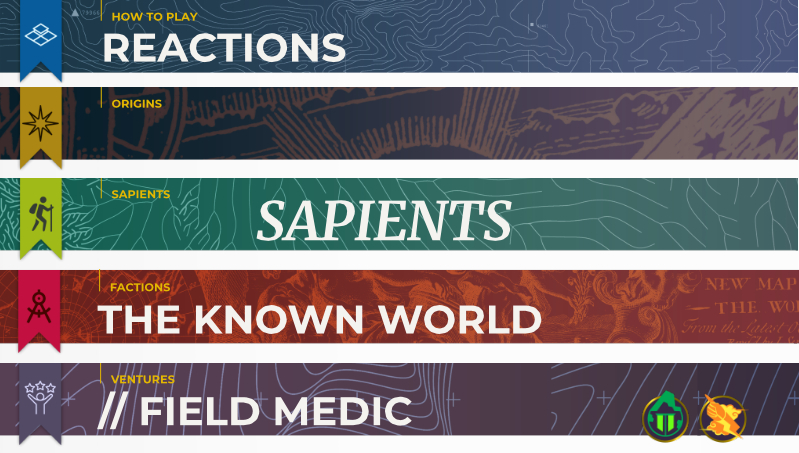
Additionally, some sections of the book giving gameplay examples are now presented as chat logs between the player and Liaison, to give a prettier and more immersive experience for readers.
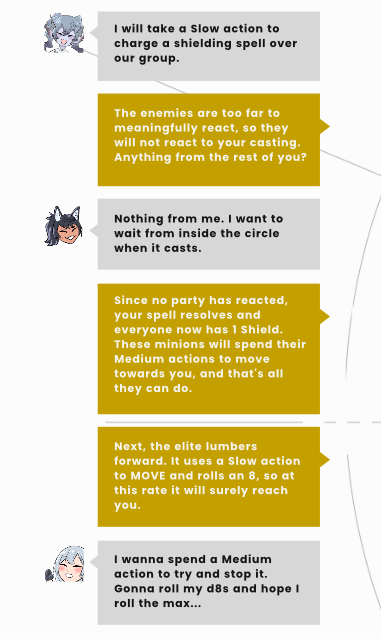
The book is coming along super nicely, but it'll be a while before 0.5 is out because of this. As always, to stay up-to-date on all Voyager updates, feel free to drop by the Discord server!
Get VOYAGER | Version 0.831 Playtest
VOYAGER | Version 0.831 Playtest
Post-apocalypse hopepunk, science fantasy, badass anime girls.
| Status | In development |
| Category | Physical game |
| Author | Switchback Worlds |
| Tags | Anime, Dice, Exploration, Fantasy, Post-apocalyptic, Tabletop, Tactical RPG |
More posts
- Voyager Twitter account!87 days ago
- Version 0.831 Ability Card Tweaks95 days ago
- Version 0.831: Looking Better Than Ever!Sep 11, 2025
- 0.83 Quickfixes + Preset SheetsAug 28, 2025
- Voyager V0.83 Combat Update!Aug 16, 2025
- V0.8 UpdateMay 30, 2025
- Voyager: Tactics 0.7 - Combat Ready!Aug 30, 2024

Leave a comment
Log in with itch.io to leave a comment.